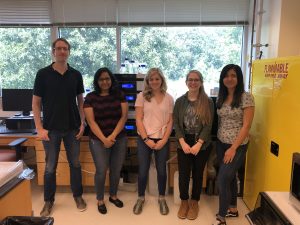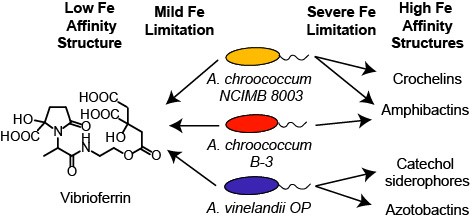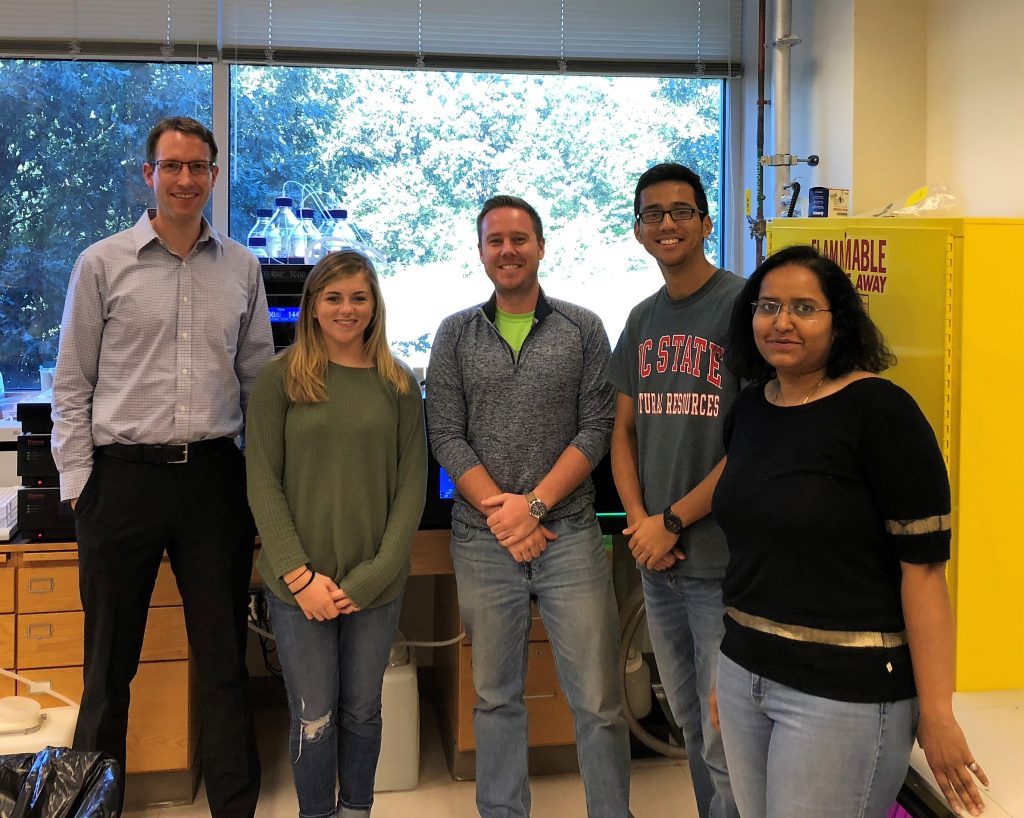Four new lab members have joined this month: Pathy Fernandez (postdoc in plant secondary metabolism and microbial interactions), Zakkiyah Majeed (technician), Camden Carmichael (undergraduate researcher in microbiology), and Tilak Patel (undergraduate in computer science). Welcome! Congratulations also to our recent Wolfpack graduate, Ashley Jeckel. Good luck with your future endeavors!
Contributing to the Collaborative Crop Resilience Program

The Baars Lab is going to be a part of a large collaborative effort to increase wheat resilience. The project is funded by the Novo Nordisk Foundation and has three major research areas: “Matrix,” “Interact,” and “In Root.” Our lab will focus on the “Interact” sub-project which is our short-hand for the full project title ‘Decoding the Rhizobiota Interactome for Improved Crop Resilience’.
Microorganisms in the root environment provide a wide range of ecosystem services to maintain a healthy environment for plant growth. The goal of Interact is to decode microbial interactions in the complex soil matrix, in relation to various external stresses and the impact of these interactions on plant performance. The Baars lab is excited to dive in and begin to elucidate chemicals in the root environment that are produced by roots and microorganisms for communication, competition, and to mine nutrient resources. The overarching goal is to utilize the potential of microbes to increase plant resilience to common stresses.
To read more about the Collaborative Crop Resilience program and its goals click here.
Summer Lab Additions

This summer, the Baars Group saw the addition of a new grad student Althea Loucanides. Additionally, a summer researcher taking part in the NSF Soil Sciences REU program (BESST), Martha Guerrero joined the lab to investigate the production of biogenic metal chelating compounds in soils with toxic concentrations of Cu 2+ and Zn 2+. BESST of luck to Martha as the Summer Symposium presentations are around the corner!
New paper in-press
In a recent Metallomics article (Metallomics Emerging Investigators special issue), we report the evolution of bacterial low and high-affinity siderophore families and their production patterns in Azotobacter sp., common plant growth promoting soil diazotrophs. The results highlight the importance of a conserved low-affinity siderophore structure alongside an arsenal of variable high-affinity siderophore structural families. These insights are relevant to understand why many bacteria are able to produce multiple siderophore structures and how beneficial siderophore producers affect the growth of plants and other rhizosphere microbes.

Zhang, X. *, O. Baars *, F. M. M. Morel, Genetic, structural, and functional diversity of low- and high-affinity siderophores in strains of nitrogen fixing Azotobacter chroococcum, Metallomics, DOI: 10.1039/c8mt00236c
(*authors contributed equally) <pdf>
Postdoc and Grad Student Join the Lab
Christopher Hahne (Graduate student) and Vineeta Rai (Postdoc) joined the lab.

